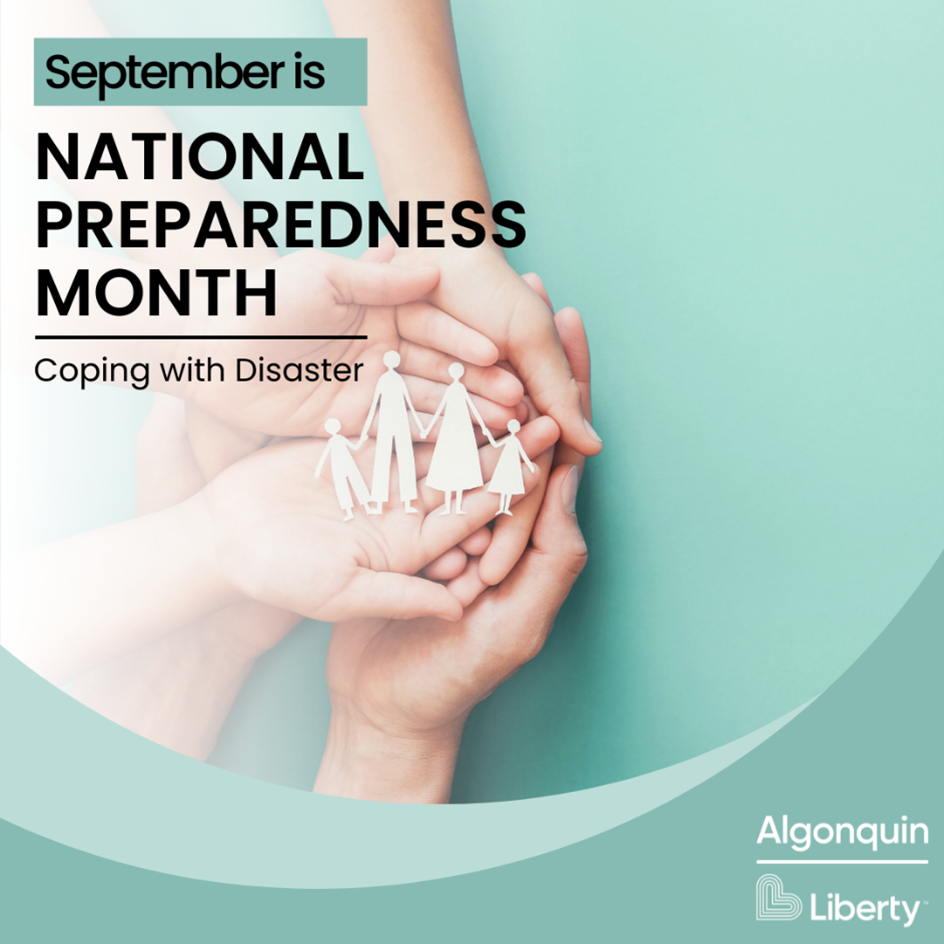
Continuing with September's National Emergency Preparedness Month the EHS and Business Resilience teams would like to highlight coping with disaster and the available disaster distress resources you can use. This is the last article in our four week series.
Recovering from a disaster is usually a gradual process. Safety is a primary issue, as are mental and physical well-being. If assistance is available, knowing how to access it makes the process faster and less stressful.
Understand disaster events
Children and older adults are of special concern in the aftermath of disasters. Even individuals who experience a disaster “second hand” through exposure to extensive media coverage can be affected.
Contact local faith-based organizations, voluntary agencies, or professional counselors for counseling. Additionally, FEMA and state and local governments of the affected area may provide crisis counseling assistance.
Individual effects of a disaster
- Everyone who sees or experiences a disaster is affected by it in some way.
- It is normal to feel anxious about your own safety and that of your family and close friends.
- Profound sadness, grief and anger are normal reactions to an abnormal event.
Recognize signs of disaster-related stress
When adults have the following signs, they might need crisis counseling or stress management assistance:
- Difficulty communicating thoughts.
- Difficulty sleeping.
- Difficulty maintaining balance in their lives.
- Low threshold of frustration.
Programs to Support Disaster Survivors
FEMA has several Individual Assistance programs designed to support disaster survivors. You can apply now at DisasterAssistance.gov or review the following types of assistance to determine what best suits your needs.
The Disaster Distress Helpline is a resource for anyone experiencing distress or other mental health concerns related to natural or human-caused disasters.
